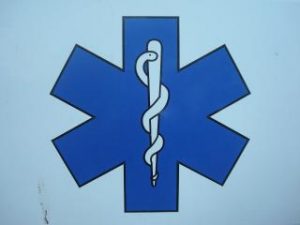New PTSD Criteria: The DSM-V
For the past few years there's been a lot of talk about how the new Diagnostic and Statistical Manual (DSM-V), the Bible of mental health diagnoses, would be changing the criteria for PTSD.
Well, on May 27th the new DSM-V was released and now we know what the changes are!
PTSD Symptoms and Categories
 The following elements are categorized as PTSD symptoms when they occur naturally (that is, not induced by substances or a medical condition) have existed for more than four weeks and cause significant dysfunction in your social, personal and/or professional areas of life.
The following elements are categorized as PTSD symptoms when they occur naturally (that is, not induced by substances or a medical condition) have existed for more than four weeks and cause significant dysfunction in your social, personal and/or professional areas of life.
Exposure: Experience of a situation that threatens death, injury or sexual violence in ways that you directly experienced the event, witnessed it in person as it happened to someone else, heard about the event happening to a close family member or friend, or experienced repeated and extreme interaction with details of the traumatic event (i.e. first responders).
Re-experiencing: Recurrent intrusive memories and thoughts about the event, dreams and nightmares with (thematically) related content, reactions (i.e. flashbacks) in which it feels like the event is happening in real time, enormous psychological and/or physiological distress brought on by external or internal cues that resemble aspects of the trauma.
Avoidance: Persistent circumvention of both internal and external cues that resemble traumatic content including, thoughts, memories, locations, people and sensory stimulation.
Alterations: Changes in cognition or mood as evidence by amnesia for an important aspect of the trauma, exaggerated and frequent negative beliefs about oneself, others and the world, distorted ideas about the cause or consequences related to the trauma that lead to blame yourself or others, consistent negative emotional perspective, lessened interest and participation in activities that previously engendered good feelings, a sense of detachment from yourself or others, long-term inability to genuinely express positive emotions.
Arousal: Increase in the following behaviors subsequent to the traumatic event, including irritability, anger/rage, self-destructive tendencies, hypervigilance, exaggerated startle response, concentration issues and sleep disturbances.
While many aspects of PTSD may occur immediately following a trauma, some people experience delayed expression: The full spectrum of diagnosable criteria develops more than six months following the trauma. In addition to the symptoms outlined above, many survivors also experience dissociative symptoms, which include depersonalization (feeling detached from your mind and/or body) and derealization (feeling that the world and your surroundings are unreal).
If you recognize your experience and/or presentation of symptoms it could be possible that you have PTSD. Receiving a professional diagnosis would be your next step and can be accomplished by meeting with a mental health professional trained in trauma and the diagnostic criteria of PTSD.
Michele is the author of Your Life After Trauma: Powerful Practices to Reclaim Your Identity. Connect with her on Google+, LinkedIn, Facebook, Twitter and her website, HealMyPTSD.com.
APA Reference
Rosenthal, M.
(2013, June 5). New PTSD Criteria: The DSM-V, HealthyPlace. Retrieved
on 2025, December 7 from https://www.healthyplace.com/blogs/traumaptsdblog/2013/06/new-ptsd-criteria-the-dsm-v